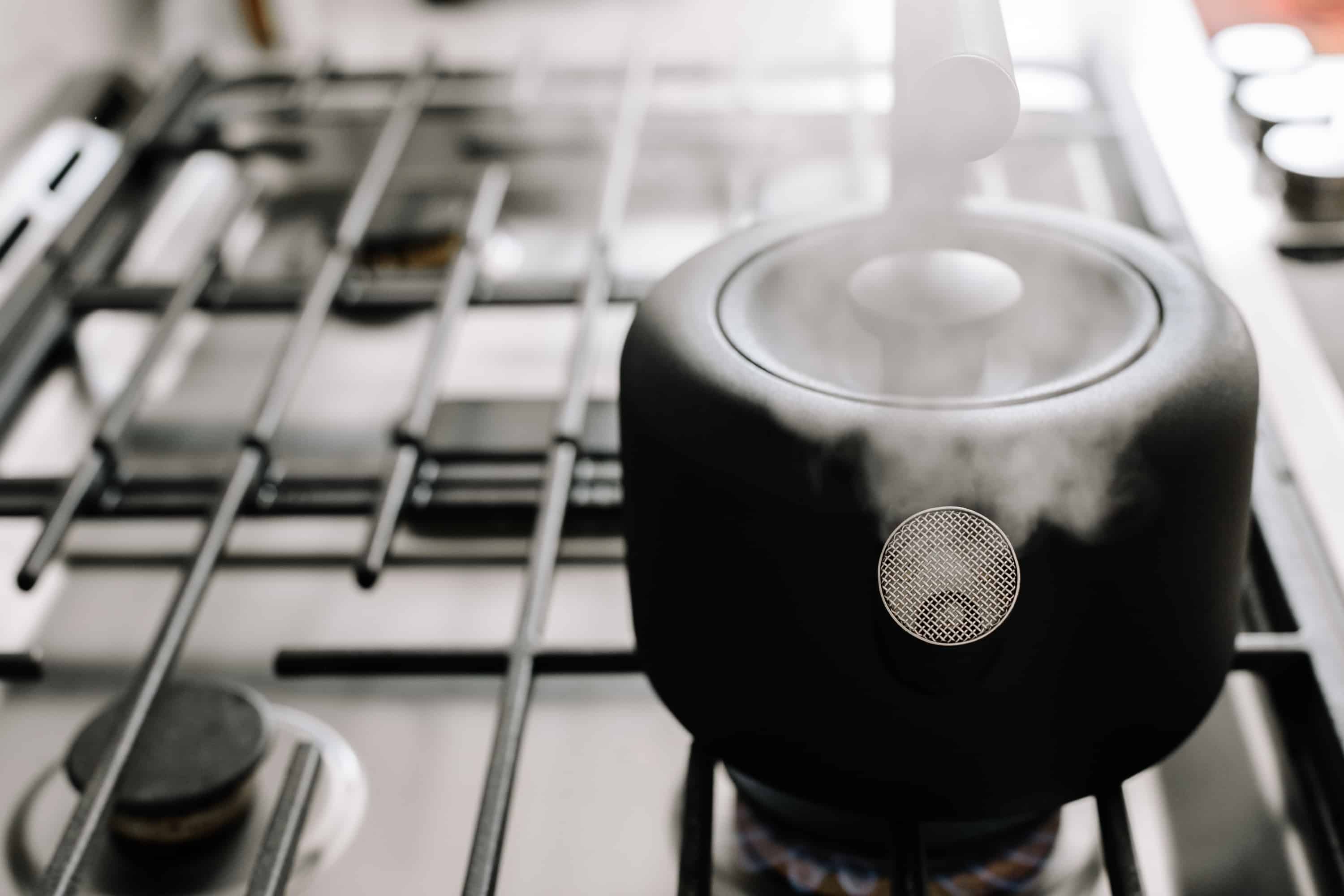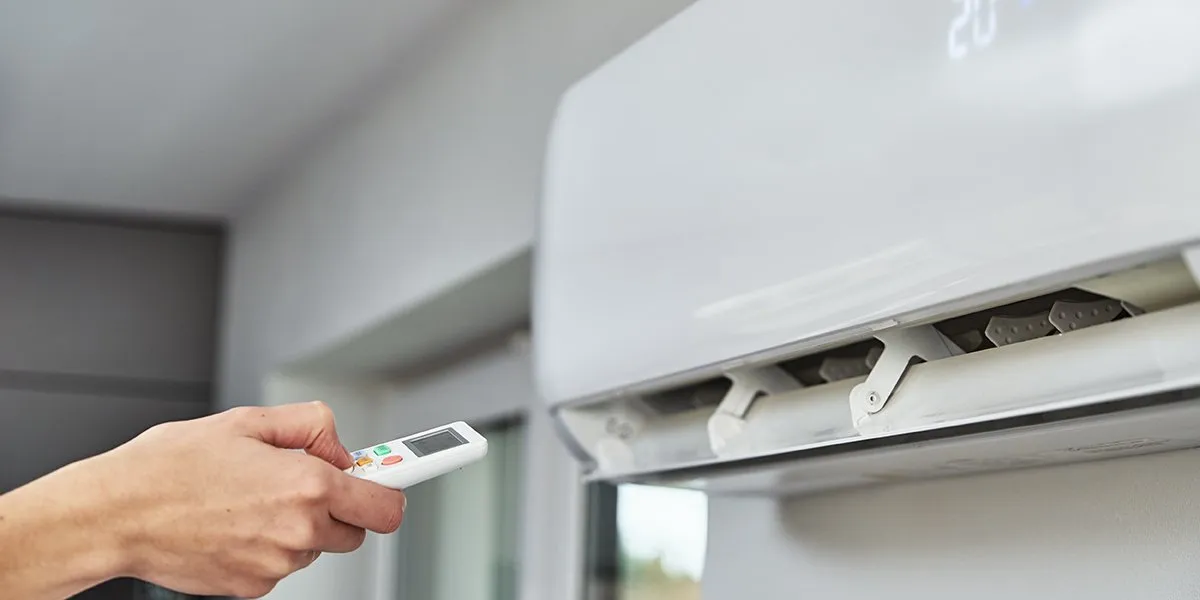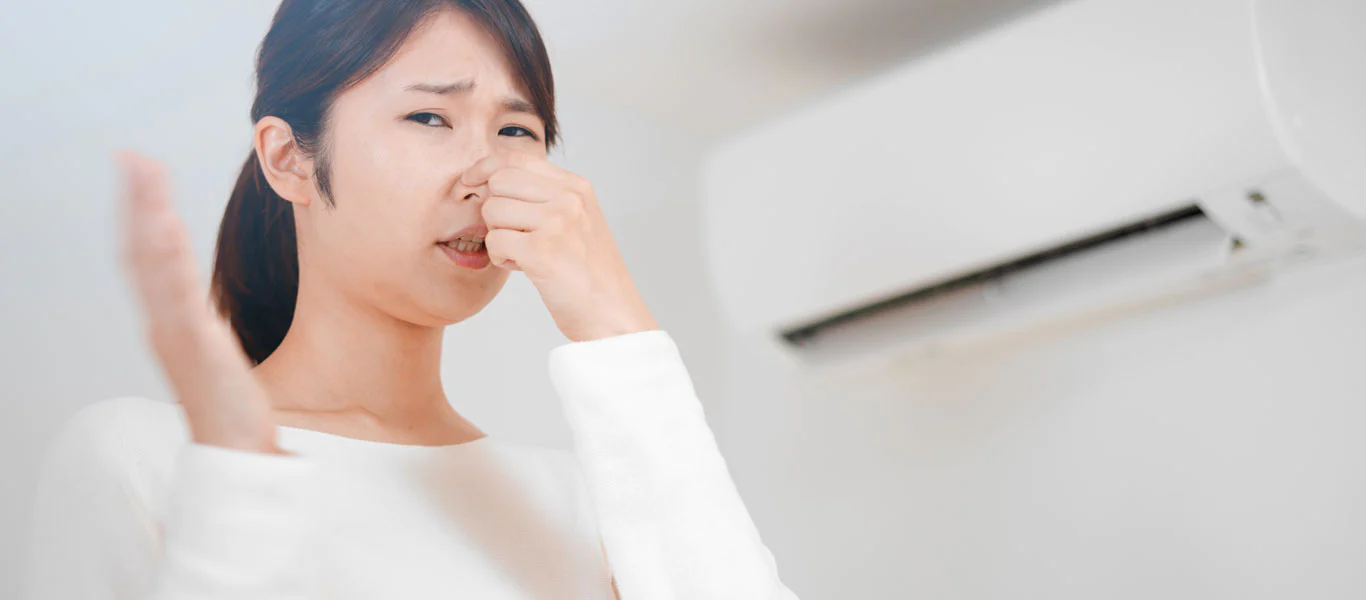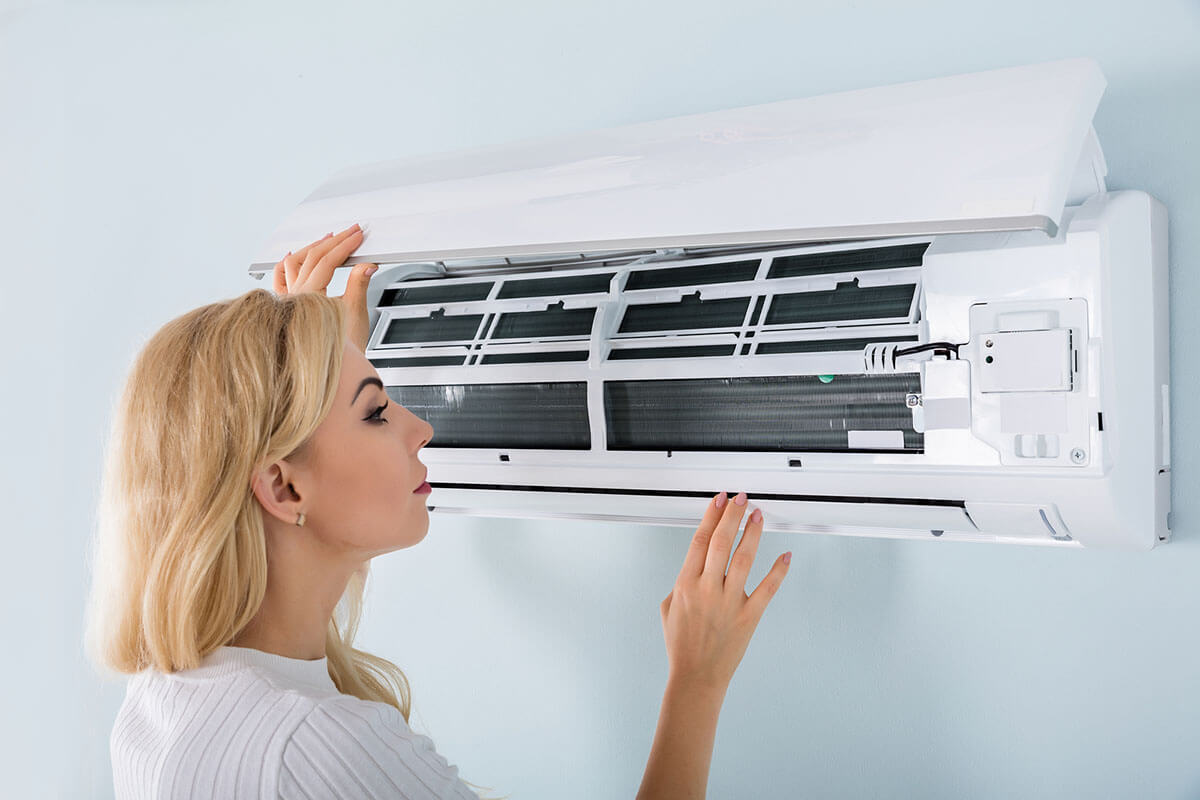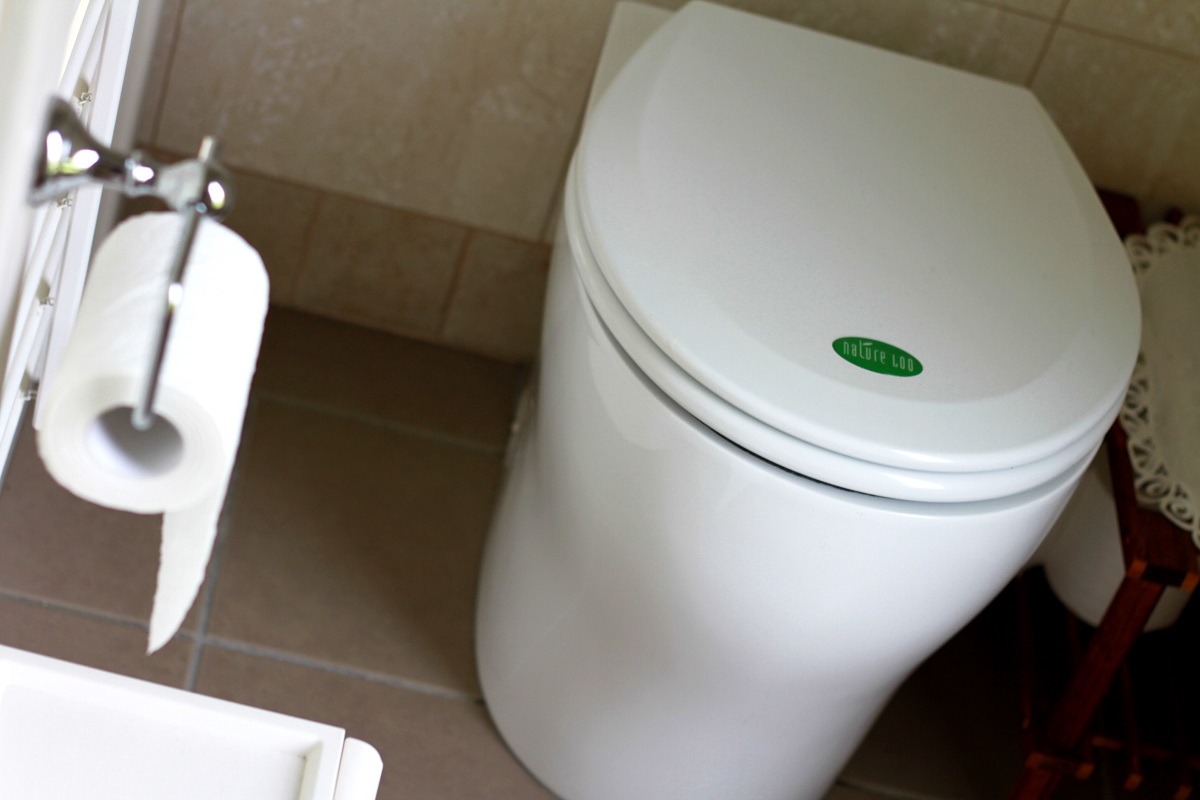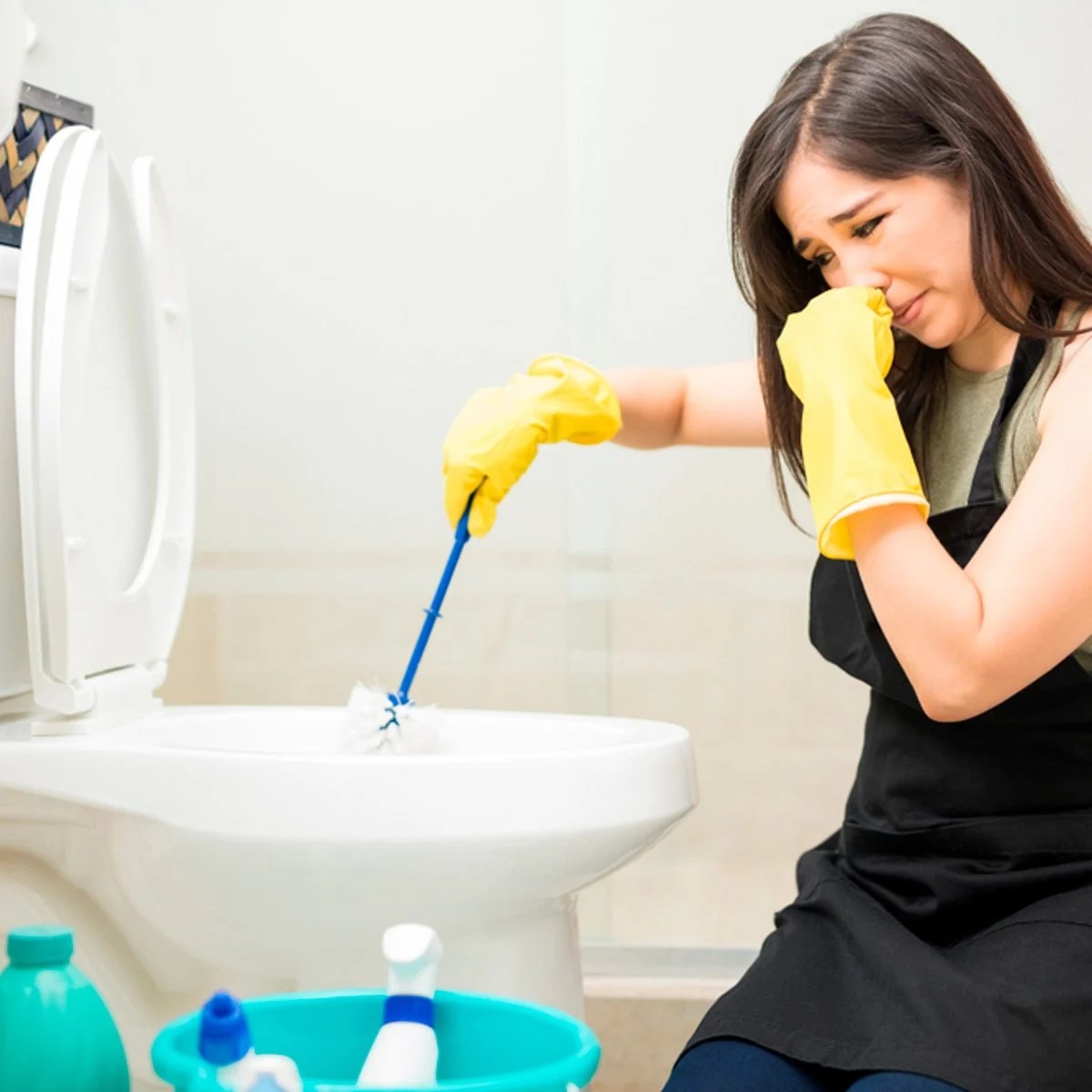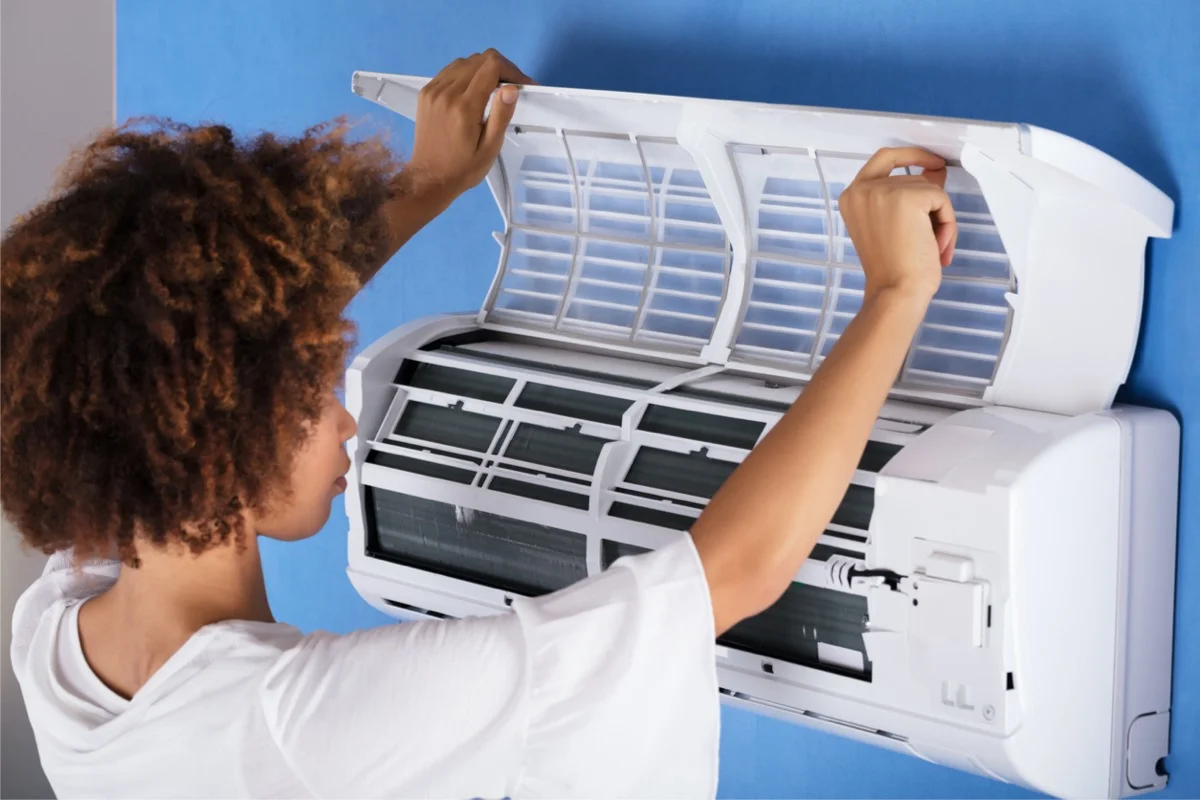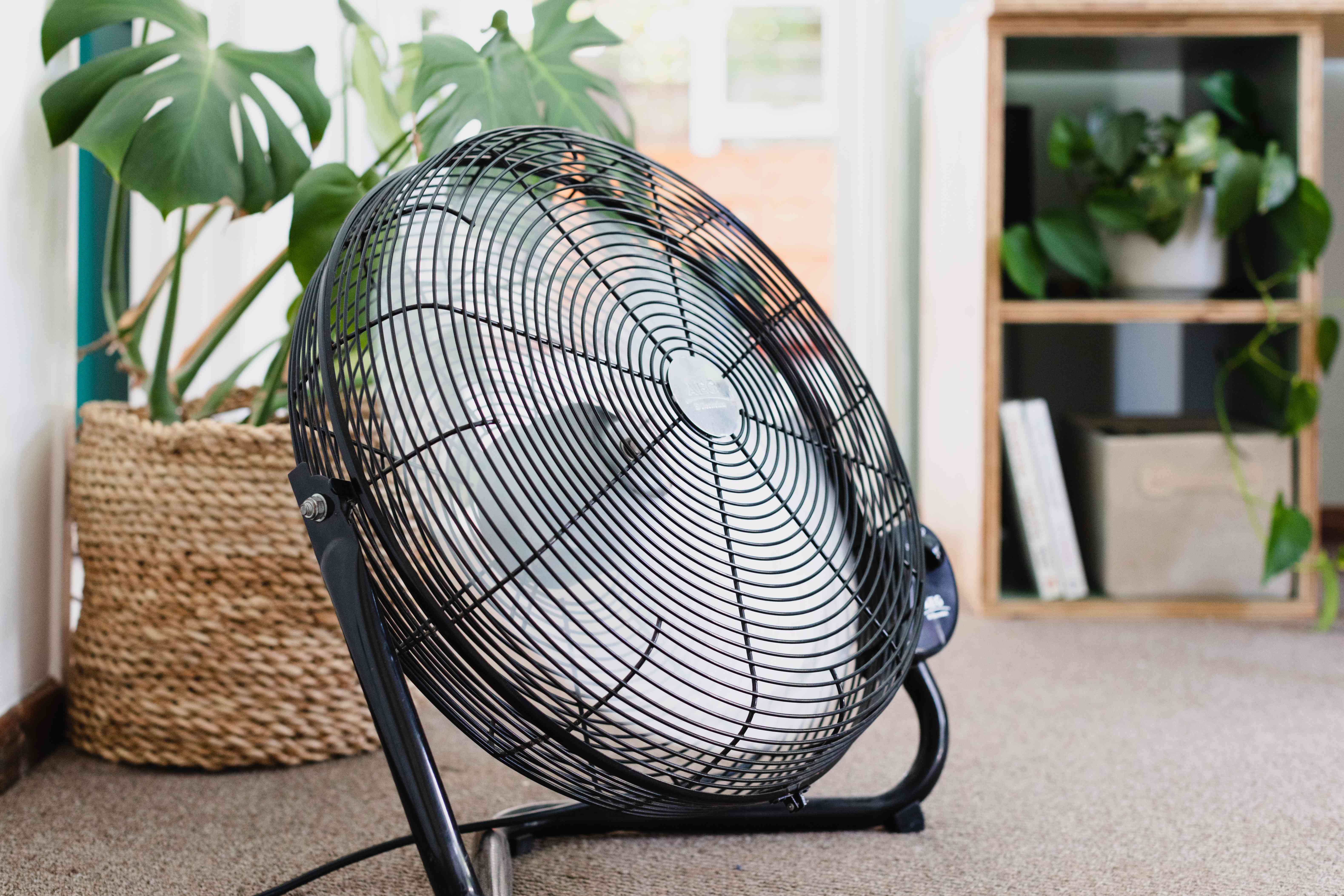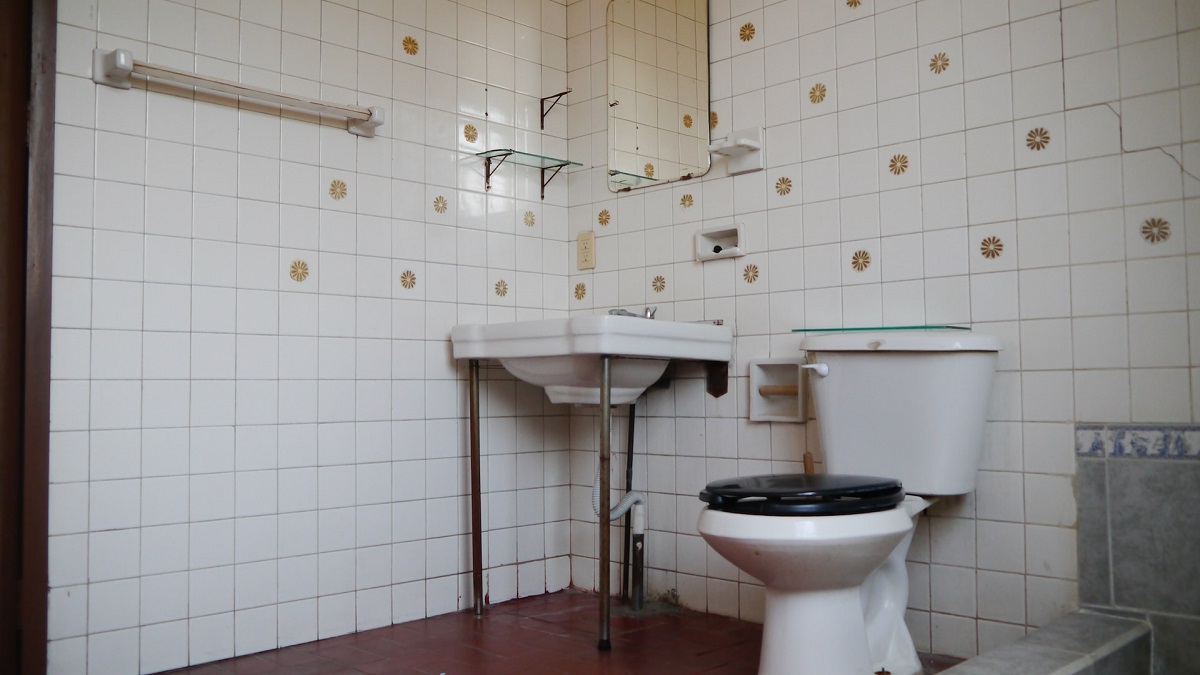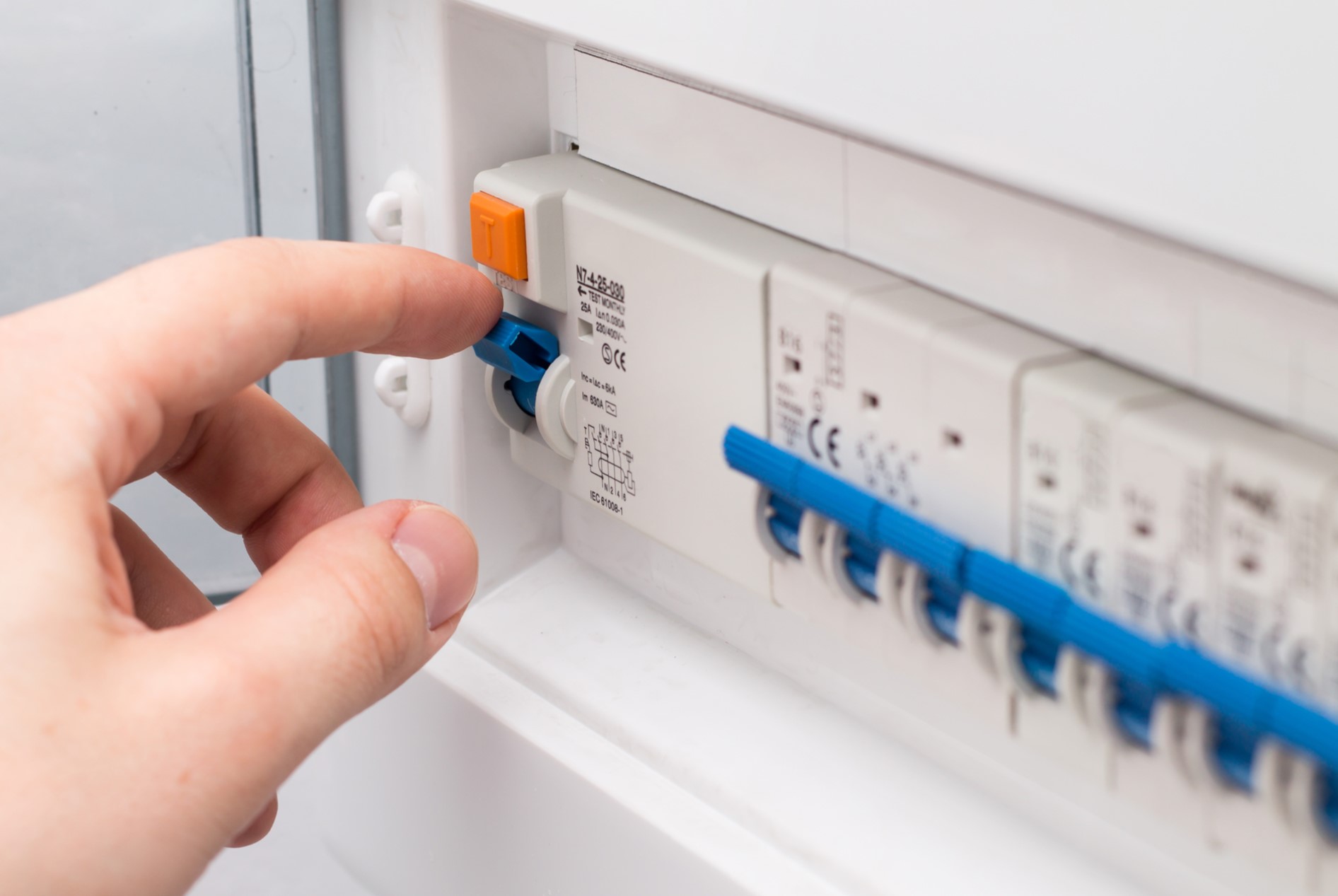Home>Home Maintenance>Why Does My Air Conditioner Whistle
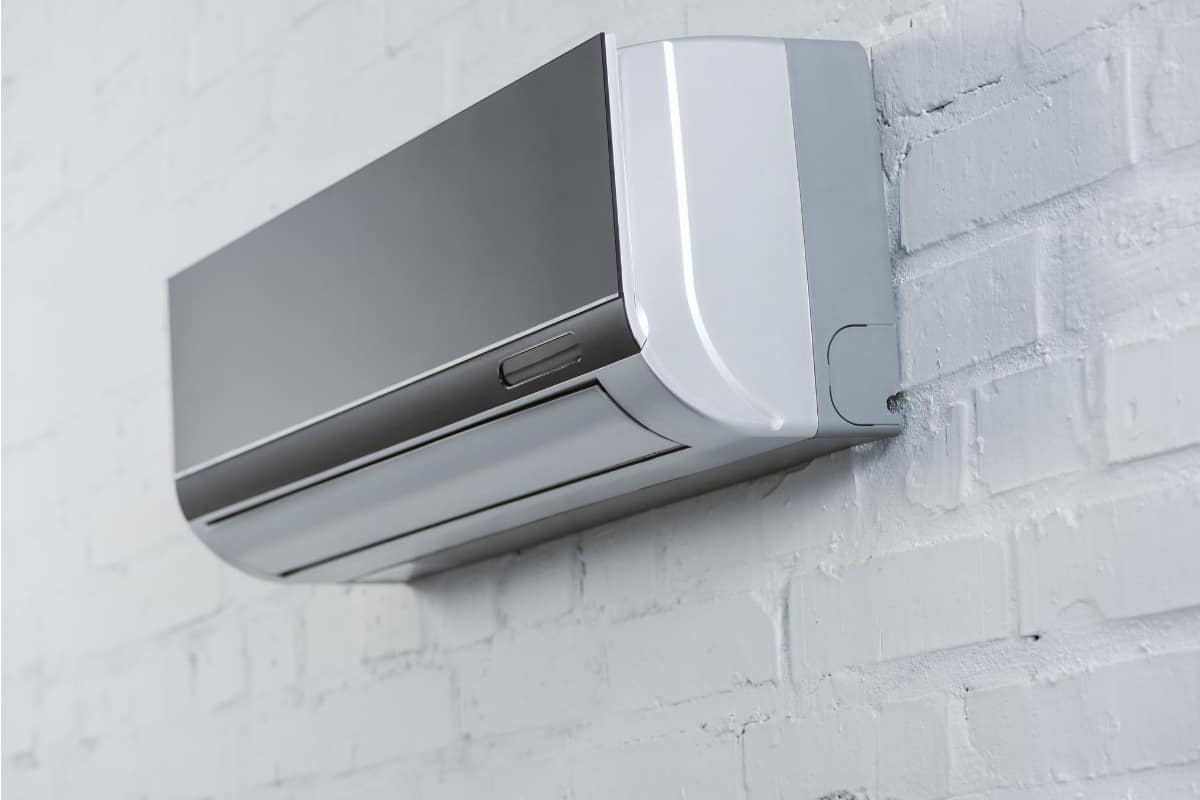

Home Maintenance
Why Does My Air Conditioner Whistle
Modified: August 28, 2024
Learn why your air conditioner may be whistling and explore the importance of regular home maintenance to keep it running smoothly.
(Many of the links in this article redirect to a specific reviewed product. Your purchase of these products through affiliate links helps to generate commission for Storables.com, at no extra cost. Learn more)
Introduction
As the temperatures rise and the summer heat sets in, we rely on our air conditioners to keep our homes cool and comfortable. However, it can be quite frustrating when instead of a pleasant hum, we are greeted with an annoying whistle coming from our air conditioning units. So why does your air conditioner whistle, and what can you do to resolve this issue?
Whistling in air conditioners can be caused by a variety of factors, ranging from minor issues to more significant problems. Understanding the reasons behind the whistling noise can help you identify the cause and take appropriate measures to address it. In this article, we will delve into the common causes of whistling and provide some solutions to ensure optimal performance of your air conditioner.
Key Takeaways:
- Keep your air conditioner whistle-free by regularly cleaning or replacing air filters, checking and adjusting fan blades, and inspecting and repairing ductwork. Addressing these common issues ensures efficient cooling and a peaceful home environment.
- Don’t let whistling noises disrupt your comfort! Sealing refrigerant leaks and calibrating or replacing a faulty thermostat are essential steps to maintain a whisper-quiet and efficient air conditioning system. Regular maintenance and timely repairs ensure a cool and serene home all year round.
Read more: Why Does My Toilet Whistle After Flushing
Understanding Whistling in Air Conditioners
Before we delve into the causes of a whistling air conditioner, it’s important to understand how the system works. Air conditioners consist of several components, including a compressor, condenser, evaporator, blower, and ductwork. The primary function of the air conditioner is to remove heat from the air inside your home and expel it outside, creating a cool and comfortable indoor environment.
Whistling in air conditioners typically occurs due to disruptions in the airflow within the system. When the airflow encounters obstacles or restrictions, it can create vibrations or turbulence, resulting in the whistling sound. Understanding the different factors that can affect the airflow will help us identify the specific causes of whistling in air conditioners.
It’s important to note that while some whistling sounds may be harmless and merely a nuisance, others can indicate more significant issues that require immediate attention. Evaluating the noise, along with other symptoms and observations, can help determine the severity of the problem and the necessary steps to resolve it.
Now that we have a basic understanding of how air conditioners work and the role of airflow let’s explore the common causes of whistling in air conditioners and how to address them.
Common Causes of Whistling
A whistling air conditioner can be attributed to several factors. Let’s take a closer look at some of the most common causes:
- Improper Airflow: Restricted or inadequate airflow is a frequent culprit behind whistling noises in air conditioners. This can occur when there are obstructions in the air intake or outlet vents, such as furniture or dirt buildup.
- Dirty Air Filters: Air filters play a crucial role in maintaining airflow and keeping the air conditioner running efficiently. When filters become clogged with dirt, dust, and debris, it can disrupt the airflow and lead to whistling noises.
- Issues with Fan Blades: The fan blades in your air conditioner help circulate the air throughout the system. If the blades are damaged, misaligned, or have excessive dirt and debris buildup, they can create turbulence and result in whistling sounds.
- Problems with Ductwork: Leaks, gaps, or loose connections in the ductwork can cause air to escape and create whistling noises. Additionally, poorly designed or undersized ducts can contribute to airflow restrictions and whistling sounds.
- Refrigerant Leaks: A refrigerant leak not only affects the cooling performance of the air conditioner but can also lead to whistling noises. The leak disrupts the refrigerant flow, causing pressure imbalances, which can result in whistling sounds.
- Faulty Thermostat: The thermostat is responsible for maintaining the desired temperature in your home. If the thermostat is not calibrated properly or is malfunctioning, it can cause the air conditioner to cycle on and off frequently, leading to whistling noises.
Keep in mind that these are just some of the common causes of whistling in air conditioners. It’s essential to assess your specific situation and identify the root cause of the noise for effective troubleshooting and resolution.
Improper Airflow
One of the most common causes of a whistling air conditioner is improper airflow. When there are obstructions or restrictions in the air intake or outlet vents, it can disrupt the smooth flow of air, leading to whistling noises. Here are a few factors that can contribute to improper airflow:
- Furniture or Objects Blocking Vents: Sometimes, furniture placement or objects placed near the air conditioning vents can obstruct the airflow. Make sure that all vents are free from any obstructions and allow for unrestricted airflow.
- Clogged or Dirty Air Filters: Air filters are essential for maintaining clean and healthy air in your home. However, when they become clogged with dirt, dust, and debris, it restricts the airflow and can lead to whistling noises. Regularly cleaning or replacing your air filters is crucial to ensure proper airflow and prevent whistling.
- Inadequate Return Air: The air conditioner requires a steady flow of return air to function properly. If there isn’t enough return air, it can create pressure imbalances and result in whistling sounds. Ensure that there are no obstructions blocking the return air vents and that they are adequately sized.
- Improperly Sized Ductwork: In some cases, the ductwork in your home may be improperly sized, leading to airflow restrictions. If the ducts are too small, the air conditioner may struggle to push air through, causing whistling noises. Consulting with a professional to assess and potentially resize your ductwork can help resolve this issue.
- Blocked Condenser Unit: The condenser unit, located outside the house, should have enough space for proper airflow. If the unit is blocked by debris, leaves, or objects, it can hinder the airflow and lead to whistling noises. Regularly clean and clear any obstructions around the condenser unit.
To resolve improper airflow issues and eliminate whistling noises, it’s important to address the underlying causes. Clearing obstructions, cleaning or replacing air filters, ensuring adequate return air flow, and maintaining a clear condenser unit are effective steps you can take to promote proper airflow and eliminate whistling noises in your air conditioner.
Dirty Air Filters
Dirty air filters are a common cause of whistling in air conditioners. Air filters play a crucial role in maintaining the cleanliness of the air inside your home and ensuring optimal airflow to the cooling system. When these filters become clogged with dirt, dust, and debris, it restricts the airflow, leading to whistling noises. Here’s what you need to know about dirty air filters and how to address them:
1. Restricted Airflow: As air passes through the clogged air filter, the accumulation of dirt and debris obstructs the flow. This restriction can create turbulence and cause the air conditioner to produce whistling sounds. It also hampers the overall performance and efficiency of the system.
2. Increased Energy Consumption: When the air filter is dirty, the air conditioning system needs to work harder to maintain the desired temperature. This increased strain on the system leads to higher energy consumption and utility bills.
3. Poor Indoor Air Quality: Dirty air filters are not only detrimental to the functionality of your air conditioner but also to the quality of the air you breathe. These filters are designed to trap allergens, dust, and other particles. However, if they are not regularly cleaned or replaced, they can fail to effectively filter the air, leading to poor indoor air quality.
To address the issue of dirty air filters and eliminate whistling noises, follow these steps:
- Regular Maintenance: Make it a habit to inspect and clean your air filters regularly. Depending on the type of air filter you have, it may need cleaning once a month or replacement every three to six months. Refer to the manufacturer’s guidelines for proper maintenance.
- Cleaning Procedure: If your air filter is reusable, carefully remove it from the unit and rinse it with water. Use mild soap if necessary to remove stubborn dirt. Allow the filter to dry completely before reinserting it into the air conditioner.
- Replacement Options: If your air filters are disposable, you can purchase replacements at your local home improvement store or online. Ensure you select the correct size and type of filter for your air conditioner. Follow the manufacturer’s instructions for proper installation.
- Set Reminders: To maintain the cleanliness of your air filters, it’s helpful to set reminders to check and clean or replace them regularly. Set a schedule that aligns with the recommended maintenance intervals and make it a part of your routine home maintenance.
By keeping your air filters clean and replacing them as needed, you can ensure proper airflow, enhance the efficiency of your air conditioner, improve indoor air quality, and eliminate whistling noises caused by dirty filters.
Read more: Why Does My Plumbing Make A Whistling Sound?
Issues with Fan Blades
Another common cause of whistling in air conditioners is issues with the fan blades. The fan blades play a crucial role in circulating air throughout the system. When these blades are damaged, misaligned, or have excessive dirt and debris buildup, they can create turbulence and result in whistling sounds. Here’s what you need to know about fan blade issues and how to address them:
1. Damaged Fan Blades: Over time, the fan blades can become damaged due to wear and tear or accidental impact. A bent or damaged blade can disrupt the airflow, creating turbulence and causing whistling noises. Inspect the fan blades for any visible signs of damage, such as bends or cracks.
2. Misaligned Fan Blades: If the fan blades are not properly aligned, they may not spin evenly, causing air turbulence and whistling sounds. This misalignment can occur due to loose screws, worn-out motor mounts, or other mechanical issues. It’s important to ensure that the fan blades are properly aligned and securely fastened.
3. Dirt and Debris Buildup: Dust, dirt, and debris can accumulate on the fan blades over time, affecting their performance and creating airflow disruptions. This buildup not only causes whistling noises but can also lead to reduced efficiency and increased strain on the motor. Regular cleaning of the fan blades is necessary to prevent these issues.
To address issues with fan blades and eliminate whistling noises, follow these steps:
- Inspect and Clean: Begin by inspecting the fan blades for any visible damage or misalignment. If you notice any issues, refer to the manufacturer’s instructions or seek assistance from a professional technician to realign or replace the blades if necessary.
- Clean the Blades: If the fan blades have dirt and debris buildup, you can clean them using a soft brush or cloth. Gently remove the dirt, being careful not to bend or damage the blades. Avoid using harsh chemicals or abrasive materials that could cause further damage.
- Professional Maintenance: If you’re unsure about how to clean or address issues with the fan blades, it’s recommended to contact a professional HVAC technician. They have the expertise and tools to properly inspect, clean, and repair the fan blades, ensuring optimal performance and eliminating whistling noises.
Regular maintenance and cleaning of the fan blades will not only resolve whistling issues but also help extend the lifespan of your air conditioner and improve its overall efficiency. By ensuring that the fan blades are in good condition and properly functioning, you can enjoy a quieter and more effective cooling experience.
Problems with Ductwork
Problems with the ductwork can be another common cause of whistling in air conditioners. The ducts are responsible for distributing cooled air throughout your home. When there are leaks, gaps, or loose connections in the ductwork, it can cause air to escape and create whistling noises. Here’s what you need to know about ductwork issues and how to address them:
1. Leaky Ducts: Leaks in the ductwork can occur due to poor installation, aging, or damage. These leaks allow air to escape before reaching the intended areas, resulting in reduced airflow and whistling sounds. Inspect the ductwork for any visible signs of leakage, such as loose joints or gaps.
2. Disconnected Ducts: Sometimes, ductwork can become disconnected or come loose, especially if it hasn’t been properly installed or maintained. These loose connections disrupt the airflow and can lead to whistling noises. Check all connections and ensure they are secure and properly sealed.
3. Undersized or Restricted Ducts: Ducts that are too small or have design flaws can create airflow restrictions, causing air to move at higher speeds and produce whistling noises. An HVAC professional can assess the size and design of your ductwork to determine if modifications or upgrades are necessary.
To address problems with the ductwork and eliminate whistling noises, follow these steps:
- Seal Leaks and Gaps: Use duct sealant or specialized duct tape to seal any leaks or gaps in the ductwork. Pay special attention to joints, connections, and areas where the ducts may have become detached or come loose.
- Insulate Exposed Ducts: Insulating exposed ductwork can help improve airflow and reduce noise. Use appropriate insulation materials to cover exposed ducts and minimize the chances of whistling sounds occurring.
- Consider Ductwork Upgrades: If your home has undersized or poorly designed ductwork, it may be worthwhile to consult with an HVAC professional to determine if upgrading or resizing the ducts is necessary. They can assess your specific needs and recommend the best course of action.
- Professional Inspection: If you’re uncertain about the condition of your ductwork or how to properly address any issues, it’s advisable to seek the assistance of a professional HVAC technician. They have the expertise and equipment to identify and resolve problems with the ductwork, ensuring optimal performance and eliminating whistling noises.
Ensuring that your ductwork is properly sealed, secure, and well-designed is essential for effective airflow and minimizing whistling noises. By addressing any problems with the ductwork promptly, you can improve the overall performance of your air conditioner and enhance your indoor comfort.
Refrigerant Leaks
Refrigerant leaks can be a significant cause of whistling in air conditioners. The refrigerant is responsible for absorbing heat from the indoor air and transferring it outside, enabling the cooling process. When there are leaks in the refrigerant lines, it disrupts the flow of refrigerant, leading to pressure imbalances and whistling noises. Here’s what you need to know about refrigerant leaks and how to address them:
1. Reduced Cooling Performance: Refrigerant leaks not only lead to whistling noises but also have a direct impact on your air conditioner’s cooling efficiency. As the refrigerant levels decrease, your air conditioner may struggle to cool the air effectively, resulting in reduced performance and longer cooling cycles.
2. Higher Energy Consumption: A refrigerant leak forces the air conditioner to work harder to maintain the desired temperature. This increased strain on the system leads to higher energy consumption and potentially higher utility bills.
3. Environmental Impact: Refrigerants used in air conditioners can have a negative impact on the environment if released into the atmosphere. Addressing refrigerant leaks promptly not only improves the performance of your air conditioner but also helps mitigate environmental harm.
If you suspect a refrigerant leak in your air conditioner, it’s crucial to contact a professional HVAC technician to handle the issue. Only certified technicians are qualified to handle refrigerant-related concerns. Here’s what they may do:
- Leak Detection: The technician will perform a thorough inspection of the refrigerant lines, coils, and other components to identify leaks. They may use specialized tools, such as electronic leak detectors or UV dyes, to locate the source of the leak.
- Repairing or Replacing Leaky Components: Once the leak is identified, the technician will repair or replace the faulty component causing the leak. This may involve soldering a small hole in the refrigerant line or replacing a damaged coil or connector.
- Recharging the Refrigerant: After resolving the leak, the technician will recharge the refrigerant to the appropriate levels, ensuring optimal cooling performance.
- Regular Maintenance: It’s essential to schedule regular maintenance with a professional HVAC technician to detect and address any potential refrigerant leaks before they become major issues. This proactive approach helps maintain the performance and efficiency of your air conditioner.
Remember, refrigerant leaks are complex issues that require the expertise of a certified technician. It’s crucial to reach out to a professional for proper diagnosis and repair to ensure the safety, efficiency, and longevity of your air conditioner.
Check for a clogged air filter or a dirty evaporator coil, as these can cause whistling in your air conditioner. Regular maintenance can prevent this issue.
Faulty Thermostat
A faulty thermostat can be another potential cause of whistling in air conditioners. The thermostat is responsible for regulating the temperature and controlling the operation of your air conditioner. When the thermostat is not functioning properly, it can cause the air conditioner to cycle on and off frequently, leading to whistling noises. Here’s what you need to know about faulty thermostats and how to address them:
1. Temperature Calibration Issues: A mis-calibrated thermostat can result in temperature variations and inconsistent cooling patterns. This can cause the air conditioner to cycle more frequently, resulting in whistling noises. An inaccurate thermostat may be reading the temperature incorrectly, leading to improper cooling settings.
2. Mechanical Malfunctions: Thermostats can experience mechanical issues over time, such as worn-out buttons, loose wiring connections, or faulty sensors. These malfunctions can disrupt the communication between the thermostat and the air conditioner, leading to irregular cooling cycles and whistling noises.
3. Compatibility Issues: Sometimes, an incompatible thermostat may be the root cause of whistling in your air conditioner. Different air conditioning units require specific thermostats to operate optimally. Using an incompatible thermostat can result in improper communication and cause the air conditioner to function incorrectly.
To address issues with a faulty thermostat and eliminate whistling noises, consider the following steps:
- Check Thermostat Settings: Ensure that the thermostat is set to the appropriate cooling mode and desired temperature. Verify that the settings are accurate and properly calibrated to avoid unnecessary cycling and whistling noises.
- Calibrate the Thermostat: If you suspect a calibration issue, consult the manufacturer’s instructions or contact a professional technician to calibrate the thermostat correctly. This will ensure accurate temperature readings and prevent unnecessary cycling.
- Check Wiring Connections: Make sure that the wiring connections to the thermostat are secure and properly connected. Loose or damaged wiring can cause communication issues and malfunctions. If you’re uncertain about inspecting the wiring, it’s best to seek the assistance of a professional technician.
- Consider Upgrading: If your thermostat is outdated or incompatible with your air conditioning unit, it may be worth considering an upgrade. Consult with a professional to determine the best thermostat option for your specific air conditioning system. Modern thermostats offer advanced features and improved compatibility, reducing the chances of whistling noises and enhancing overall control of your cooling system.
- Professional Assistance: If you’re experiencing persistent issues with your thermostat or unsure about how to address the problem, it’s advisable to consult a professional HVAC technician. They have the expertise to diagnose and resolve thermostat issues, ensuring optimal performance and eliminating whistling noises.
A properly functioning thermostat is crucial for maintaining the comfort and efficiency of your air conditioning system. By addressing faulty thermostat issues promptly, you can enjoy a quieter and more consistent cooling experience in your home.
Read more: Why Does My Gas Fire Pit Whistle
Resolving Whistling in Air Conditioners
Whistling in air conditioners can be a frustrating issue, but fortunately, there are several steps you can take to resolve it. Here are some effective solutions for eliminating whistling noises in your air conditioner:
- Cleaning or Replacing Air Filters: Regularly clean or replace your air filters to ensure proper airflow and prevent dirt and debris from causing whistling noises. Follow the manufacturer’s recommendations for maintenance intervals.
- Checking and Adjusting Fan Blades: Inspect the fan blades for any damage, misalignment, or excessive dirt buildup. Repair or replace damaged blades and clean them to promote smooth airflow and eliminate turbulence and whistling noises.
- Inspecting and Repairing Ductwork: Thoroughly examine the ductwork for leaks, gaps, loose connections, or design issues. Seal any leaks and gaps with duct sealant or specialized tape. Consider professional inspection and repairs, if needed, to ensure proper airflow and eliminate whistling sounds.
- Sealing Refrigerant Leaks: If you suspect a refrigerant leak, contact a professional HVAC technician to properly diagnose and repair the issue. Fixing refrigerant leaks restores proper system performance, prevents unnecessary cycling, and eliminates whistling noises.
- Calibrating or Replacing Thermostat: Ensure that your thermostat is set correctly and accurately calibrated. If you suspect a faulty thermostat, consult the manufacturer’s instructions or seek professional assistance to calibrate or replace the thermostat as needed.
It’s important to note that while these solutions can resolve many whistling issues, certain cases may require professional intervention. If the problem persists or you are unsure about how to address it, it’s recommended to reach out to a qualified HVAC technician. They have the necessary expertise and equipment to diagnose and resolve complex issues with your air conditioner.
Remember, regular maintenance and inspection of your air conditioning system can help detect and address potential problems before they escalate into major issues. By keeping your air conditioner in good working condition, you can enjoy a comfortable and whisper-quiet cooling experience in your home.
Take the necessary steps to eliminate whistling noises in your air conditioner and restore its optimal performance. Don’t let irritating sounds disrupt your comfort — address the underlying causes and enjoy a peaceful and efficient cooling system all summer long.
Cleaning or Replacing Air Filters
Cleaning or replacing air filters is a crucial step in maintaining your air conditioning system and eliminating whistling noises. Air filters are designed to trap dust, dirt, allergens, and other particles, ensuring clean and healthy air in your home. Over time, these filters can become clogged with debris, restricting airflow and causing whistling sounds. Here’s what you need to know about cleaning or replacing air filters:
1. Regular Maintenance: It’s important to establish a regular maintenance routine for your air filters. The frequency of cleaning or replacement depends on several factors, such as the type of filter, the air quality in your area, and the number of occupants in your home. Refer to the manufacturer’s recommendations for the specific filter type you’re using.
2. Inspecting the Filters: Before deciding whether to clean or replace the filters, visually inspect them to assess their condition. If the filters appear dirty, clogged, or discolored, it’s likely time for cleaning or replacement.
3. Cleaning Procedure: If you have reusable air filters, cleaning them is a cost-effective option. Start by turning off your air conditioning system. Remove the filters according to the manufacturer’s instructions. Depending on the type of filter, you can usually rinse it with water or use a vacuum to remove dirt and debris. If necessary, you can use mild soap to clean stubborn dirt, but be sure to thoroughly rinse the filters and allow them to dry completely before reinstalling them.
4. Replacing the Filters: Disposable filters are designed to be replaced when they become dirty or clogged. Remove the old filter from the air conditioning system and carefully install the new one, following the manufacturer’s guidelines. Make sure to choose the correct size and type of filter for your specific system.
5. Set Reminders: To ensure that you stay on top of air filter maintenance, set reminders to clean or replace them at the recommended intervals. This will help you maintain good indoor air quality, minimize whistling noises, and improve the overall efficiency of your air conditioning system.
Regularly cleaning or replacing air filters offers several benefits. It ensures proper airflow, improves the efficiency of your air conditioning system, extends the lifespan of the equipment, and reduces the chances of whistling noises. Additionally, clean filters result in cleaner air, reducing the risk of allergies and respiratory issues.
Remember, if you’re uncertain about how to clean or replace your filters or if you have any concerns about your air conditioning system, it’s best to consult a professional HVAC technician. They can provide guidance, perform maintenance, and address any underlying issues to optimize the performance of your air conditioner and eliminate whistling noises.
Checking and Adjusting Fan Blades
Checking and adjusting the fan blades of your air conditioning system is an essential step in eliminating whistling noises and ensuring smooth airflow. The fan blades are responsible for circulating air throughout the system, and any issues with them can lead to turbulence and whistling sounds. Here’s what you need to know about checking and adjusting fan blades:
1. Inspecting the Fan Blades: Begin by turning off your air conditioning system and visually inspecting the fan blades. Look for any visible signs of damage, such as bends, cracks, or chips. Additionally, check for excessive dirt, dust, or debris buildup on the blades.
2. Repairing or Replacing Damaged Blades: If you notice any damage to the fan blades, it’s crucial to address it promptly. Damaged blades can create turbulence, interfere with proper airflow, and cause whistling noises. Depending on the extent of the damage, you may need to repair or replace the fan blades entirely. Consult with a professional HVAC technician for the best course of action.
3. Cleaning the Fan Blades: If the fan blades are dirty or covered in debris, it’s important to clean them thoroughly. Use a soft brush or cloth to gently remove the dirt and debris. Avoid using harsh chemicals or abrasive materials that could damage the blades. Cleaning the fan blades promotes smooth airflow, reduces turbulence, and eliminates whistling sounds.
4. Ensuring Proper Alignment: Misaligned fan blades can also cause whistling noises. Check the alignment of the fan blades and ensure they are properly balanced. If you notice any misalignment, consult a professional HVAC technician to adjust and align the blades correctly. Properly aligned blades ensure smooth operation and minimize turbulence and associated whistling noises.
5. Regular Maintenance: It’s recommended to include fan blade inspection and maintenance as part of your regular HVAC system maintenance routine. Schedule professional maintenance at least once a year to ensure that the fan blades are in good condition and properly adjusted.
By checking and adjusting the fan blades of your air conditioning system, you can eliminate potential causes of whistling noises and maintain optimal airflow. This promotes efficient cooling, reduces strain on the system, and improves overall performance.
If you’re unsure about how to inspect or adjust your fan blades or if you have any concerns about your air conditioning system, it’s best to consult a professional HVAC technician. They have the expertise and tools to properly inspect, clean, and adjust the fan blades, ensuring optimal performance and eliminating whistling noises.
Inspecting and Repairing Ductwork
Inspecting and repairing the ductwork is a crucial step in resolving whistling noises in your air conditioning system. The ductwork plays a vital role in transporting cooled air throughout your home, and any issues with it can disrupt airflow and cause whistling sounds. Here’s what you need to know about inspecting and repairing ductwork:
1. Visual Inspection: Start by visually inspecting the ductwork for any visible signs of damage, such as holes, leaks, loose connections, or gaps. Ensure that all sections of the ductwork are properly sealed and securely attached.
2. Checking for Leaks: Leaks in the ductwork can result from poor installation, aging, or damage. These leaks cause air to escape, leading to reduced airflow and whistling noises. Use your hand to feel for any air leakage around the duct joints and connections. Alternatively, you can use a smoke pen or incense stick to detect air movement that may indicate leaks.
3. Sealing Leaks and Gaps: If you identify any leaks or gaps in the ductwork, it’s crucial to seal them properly. Use duct sealant or specialized tape designed for HVAC ducts to seal any leaks or gaps. Pay special attention to joints, connections, and areas where the ducts may have become detached or come loose.
4. Insulating Exposed Ducts: Insulating exposed ductwork can help improve airflow and reduce noise transmission. Insulation materials, such as duct insulation sleeves or blankets, can minimize condensation and duct vibrations that contribute to whistling sounds.
5. Professional Inspection and Repair: If you’re unsure about the condition of your ductwork or if you need assistance with repairs, it’s advisable to seek the help of a professional HVAC technician. They have the expertise and tools to thoroughly inspect, identify, and repair any issues with your ductwork.
It’s worth noting that improper duct design, such as undersized or poorly laid out ducts, can also contribute to whistling noises. In such cases, consulting with an HVAC professional for ductwork modifications or upgrades may be necessary to resolve the issue effectively.
Regular inspection and maintenance of your ductwork can help detect and address potential issues before they escalate. By ensuring that your ducts are properly sealed, secured, and insulated, you can eliminate whistling noises, enhance airflow, and improve the overall efficiency of your air conditioning system.
If you’re experiencing persistent whistling noises or if you’re unsure about how to inspect or repair your ductwork, it’s best to consult a professional HVAC technician. They can provide guidance, perform necessary repairs or modifications, and optimize the performance of your ductwork to eliminate whistling sounds.
Read more: Why Is My Water Heater Whistling
Sealing Refrigerant Leaks
Sealing refrigerant leaks is crucial in resolving whistling noises and ensuring the optimal performance of your air conditioning system. Refrigerant leaks can disrupt the flow of refrigerant, leading to pressure imbalances and whistling sounds. Here’s what you need to know about sealing refrigerant leaks:
1. Identifying the Leak: Refrigerant leaks can be difficult to detect since the refrigerant is often colorless and odorless. However, some indicators of a refrigerant leak include reduced cooling performance, ice buildup on refrigerant lines, or a noticeable decrease in refrigerant levels. If you suspect a refrigerant leak, it’s important to contact a professional HVAC technician to perform a thorough inspection.
2. Professional Intervention: Sealing refrigerant leaks requires specialized knowledge and equipment, so it’s essential to seek the assistance of a certified HVAC technician. They have the expertise to accurately diagnose the leak and determine the best course of action for sealing it.
3. Repairing the Leak: Once the refrigerant leak is identified, the technician will repair it by using appropriate methods and materials. Common repair techniques include soldering small holes in the refrigerant lines or replacing damaged components such as coils or connectors.
4. Recharging the Refrigerant: After sealing the leaks, the technician will recharge the refrigerant to the appropriate level. This ensures that the air conditioning system can operate optimally and provide efficient cooling performance.
It’s important to address refrigerant leaks promptly. Ignoring these leaks can lead to reduced cooling efficiency, increased energy consumption, and potential damage to the compressor or other components of the air conditioning system.
Preventing refrigerant leaks in the future can also be beneficial. Here are some tips:
- Regular Maintenance: Schedule regular maintenance for your air conditioning system with a professional HVAC technician. They will inspect the system, including the refrigerant lines, for any signs of leaks or other issues.
- Avoid DIY Repairs: Refrigerant leaks should only be handled by trained professionals. Attempting DIY repairs can be dangerous and may result in further damage or leaks. Always contact a certified HVAC technician for any refrigerant-related concerns.
- Proper Installation: Whether you’re getting a new air conditioning system or replacing existing components, make sure that the installation is performed by qualified professionals. Proper installation reduces the chances of leaks in the future.
- Regular Inspections: Stay vigilant and keep an eye out for any signs of refrigerant leaks, such as reduced cooling performance or unusual hissing sounds. If you notice any issues, contact a professional HVAC technician to conduct a thorough inspection and address the problem.
By sealing refrigerant leaks and taking preventive measures, you can ensure the efficient operation of your air conditioning system, minimize energy consumption, and eliminate whistling noises caused by imbalance or disruption in the refrigerant flow.
Remember, refrigerant-related tasks should always be left to certified HVAC technicians. They have the necessary expertise, tools, and knowledge to handle refrigerant leaks safely and effectively.
Calibrating or Replacing Thermostat
A properly functioning thermostat is essential for maintaining a comfortable indoor temperature and preventing whistling noises in your air conditioning system. If your thermostat is not calibrated correctly or is malfunctioning, it can cause irregular cooling cycles and lead to whistling sounds. Here’s what you need to know about calibrating or replacing your thermostat:
1. Check Thermostat Settings: Ensure that your thermostat is set to the appropriate cooling mode and the desired temperature. Verify that the settings are accurate and properly calibrated to avoid unnecessary cycling and whistling noises.
2. Calibrating the Thermostat: If you suspect that your thermostat is not accurately measuring or responding to temperature changes, it may need to be calibrated. Consult the manufacturer’s instructions or contact a professional HVAC technician to calibrate the thermostat properly. Calibration ensures that the thermostat provides accurate temperature readings and helps prevent unnecessary cycling.
3. Repairing or Replacing a Faulty Thermostat: If your thermostat is malfunctioning and cannot be calibrated effectively, it may need to be repaired or replaced. Common issues include a malfunctioning sensor, loose wiring connections, or worn-out buttons. A professional HVAC technician can assess the thermostat’s condition and recommend the best course of action.
4. Consider Upgrading: If your thermostat is outdated or incompatible with your air conditioning system, it may be worthwhile to consider an upgrade. Modern thermostats offer advanced features such as programmable settings, Wi-Fi connectivity, and smart home integration. Upgrading to a more efficient and accurate thermostat can help prevent whistling noises and provide better control over your cooling system.
5. Professional Assistance: If you’re unsure about how to calibrate or replace your thermostat, or if you have any concerns about its functionality, it’s recommended to consult a professional HVAC technician. They have the expertise to diagnose and address thermostat issues, ensuring optimal performance and preventing whistling noises.
Regular maintenance and inspection of your thermostat can help detect and resolve any potential issues before they escalate. By ensuring that your thermostat is accurately calibrated or replaced as needed, you can maintain precise temperature control, prevent unnecessary cycling, and eliminate whistling noises in your air conditioning system.
Remember, for thermostat-related concerns, it’s best to consult a professional HVAC technician. They have the knowledge and experience to properly calibrate or replace your thermostat, ensuring the efficient operation of your air conditioning system and a comfortable indoor environment.
Conclusion
Whistling in air conditioners can be a frustrating issue, but with proper understanding and proactive measures, you can eliminate this nuisance and maintain a comfortable and efficient cooling system in your home. By addressing the common causes of whistling, such as improper airflow, dirty air filters, issues with fan blades, problems with ductwork, refrigerant leaks, and faulty thermostats, you can effectively resolve the problem.
Regular maintenance and inspections are crucial for keeping your air conditioning system in optimal condition. Cleaning or replacing air filters, checking and adjusting fan blades, inspecting and repairing ductwork, sealing refrigerant leaks, and calibrating or replacing a faulty thermostat are all essential steps in addressing whistling noises. Each of these actions contributes to proper airflow, efficient cooling performance, and a quieter operation of your air conditioner.
Remember to consult with a professional HVAC technician for any complex issues or if you’re unsure about how to address specific problems. They have the expertise, knowledge, and specialized tools to properly diagnose and resolve any issues with your air conditioner.
By taking proactive measures, you can enjoy a whisper-quiet and efficient cooling system in your home. Regular maintenance, timely repairs, and awareness of potential causes of whistling noises will help you achieve optimal performance from your air conditioning system while ensuring your comfort and satisfaction throughout the summer months.
Investing time and effort in maintaining your air conditioner will pay off in the long run, as it will not only eliminate whistling noises but also extend the lifespan of your unit and improve energy efficiency. So, take the necessary steps to address any whistling issues, and enjoy a cool and serene environment in your home all year round.
Frequently Asked Questions about Why Does My Air Conditioner Whistle
Was this page helpful?
At Storables.com, we guarantee accurate and reliable information. Our content, validated by Expert Board Contributors, is crafted following stringent Editorial Policies. We're committed to providing you with well-researched, expert-backed insights for all your informational needs.
